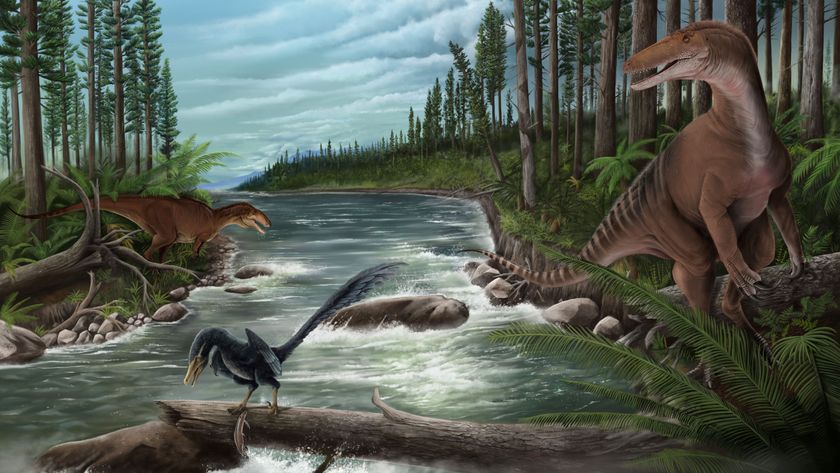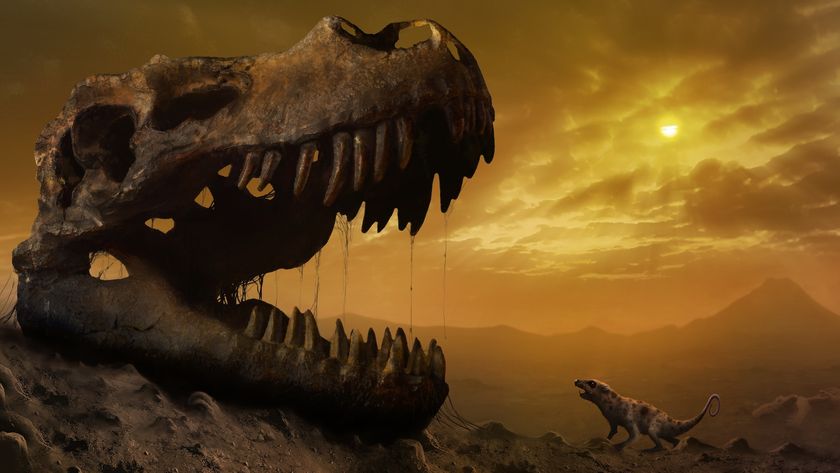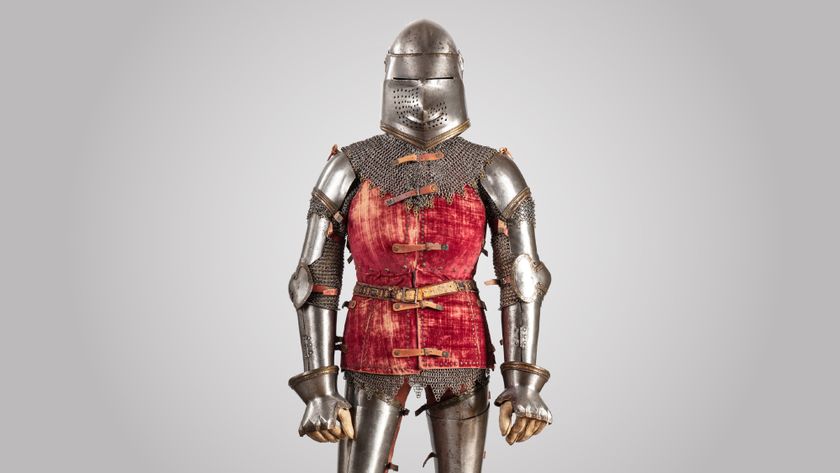Spaniel-Size Triceratops Cousin Walked on Its Two Hind Legs
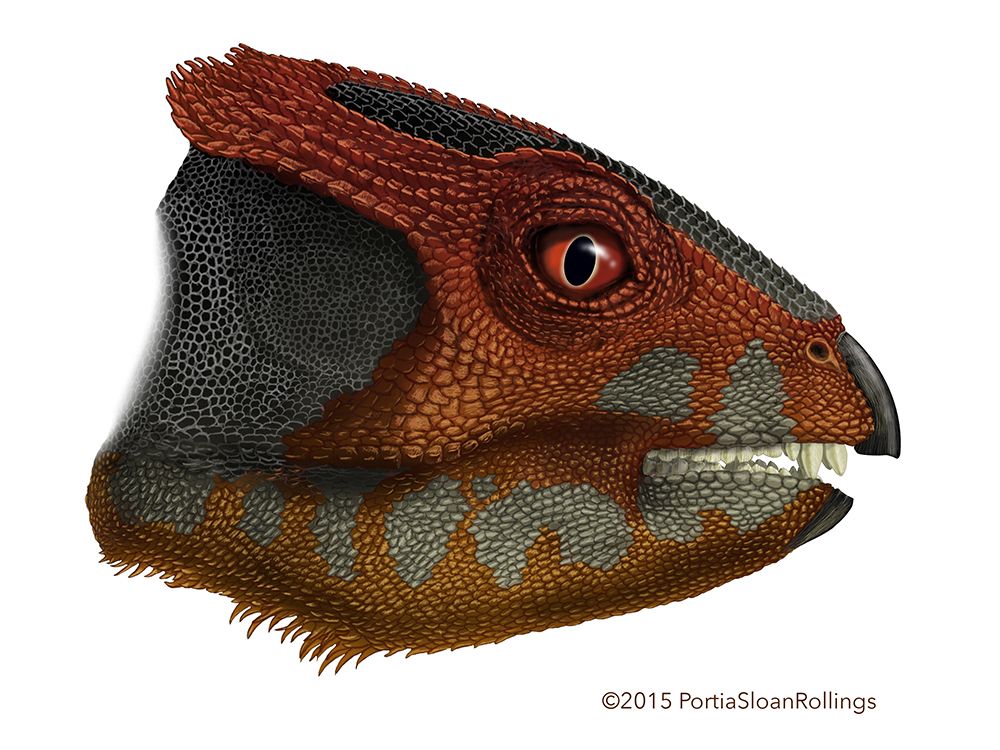
The discovery of a spaniel-size ceratopsian that walked on its two hind legs reveals that Late Jurassic horned dinosaurs were much more diverse than previously thought, a new study finds.
Researchers uncovered the remains of the 160-million-year-old, plant-eating creature in China's Gobi desert. The new specimen has a unique ornamental texture on its skull, and it's much smaller than its famous distant cousin, Triceratops, which lived about 95 million years later in North America during the Late Cretaceous, the researchers said.
Though its anatomy suggests the newfound beast was an early horned dinosaur, it didn't sport any horns. That's no surprise — other early horned dinosaurs, including the small bipedal Yinlong downsi, which the researchers found in the same Gobi desert fossil bed, didn't have horns, either, the researchers said. [Photos: Oldest Known Horned Dinosaur in North America]
"It looks like Yinlong downsi, but much larger," said study lead author Fenglu Han, a postdoctoral student in the School of Earth Sciences at the China University of Geosciences. "Most of the skull bones [of the new species] are sculpted."
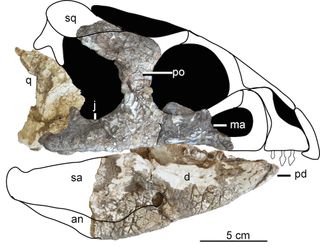
After analyzing the fossils — a partial skull and foot — the researchers named the newly identified species Hualianceratops wucaiwanensis (HWAL-ee-on SAR-ah-tops woo-sigh-wahn-EN-sis). In Mandarin, Hualian means "ornamental face," referring to the unique texture on its skull, and ceratops means "horned face" in Greek. The wucaiwan part of the species name refers to the area in which the fossil was discovered, and means "five color bay" in Mandarin.
When the researchers uncovered H. wucaiwanensis in 2002, they initially thought it was an ankylosaur, Han told Live Science. But a detailed study confirmed that, like Yinlong downsi, the newfound plant eater is among the oldest ceratopsians known to science, he said.
"Finding these two species in the same fossil beds reveals there was more diversity there than we previously recognized," study co-author Catherine Forster, a professor of biology at The George Washington University in Washington, D.C., said in a statement. "It suggests that the ceratopsian dinosaurs already had diversified into at least four lineages by the beginning of the Jurassic period."
Sign up for the Live Science daily newsletter now
Get the world’s most fascinating discoveries delivered straight to your inbox.
A comparison of H. wucaiwanensis with other ceratopsians is helping researchers reassess the pace and pattern of horned-dinosaur evolution, the researchers said. For instance, little is known about the evolution of the small, parrot-beaked horned dinosaur group Psittacosaurus, which lived in China during the Early Cretaceous.

"Hualianceratops preserved some derived features of Psittacosaurus, and may provide more information of the origin of Psittacosaurus," Han said.
Moreover, H. wucaiwanensis lived at the same time and place as Guanlong, an early relative of Tyrannosaurus rex. It's possible that Guanlong hunted H. wucaiwanensis, but more evidence is needed to say for sure, Han said.
The new study is "an exciting paper," said Caleb Brown, a paleobiologist at the Royal Tyrrell Museum of Palaeontology in Canada, who was not involved in the study. "These small, early ceratopsians are important because they can tell us about the early evolution of this iconic group."
The analysis suggests that the evolutionary split between Neoceratopsia (a group that includes Triceratops) and Psittacosaurus is older than previously thought, Brown said.
"Given the pattern of relationships revealed by the new animal and new analysis, the paper also suggests that there are many more, and more varied, species of these small …horned dinosaurs during the initial evolution of this group," Brown told Live Science.
The study was published online today (Dec. 9) in the journal PLOS ONE.
Follow Laura Geggel on Twitter @LauraGeggel. Follow Live Science @livescience, Facebook & Google+. Original article on Live Science.

Laura is the archaeology and Life's Little Mysteries editor at Live Science. She also reports on general science, including paleontology. Her work has appeared in The New York Times, Scholastic, Popular Science and Spectrum, a site on autism research. She has won multiple awards from the Society of Professional Journalists and the Washington Newspaper Publishers Association for her reporting at a weekly newspaper near Seattle. Laura holds a bachelor's degree in English literature and psychology from Washington University in St. Louis and a master's degree in science writing from NYU.
